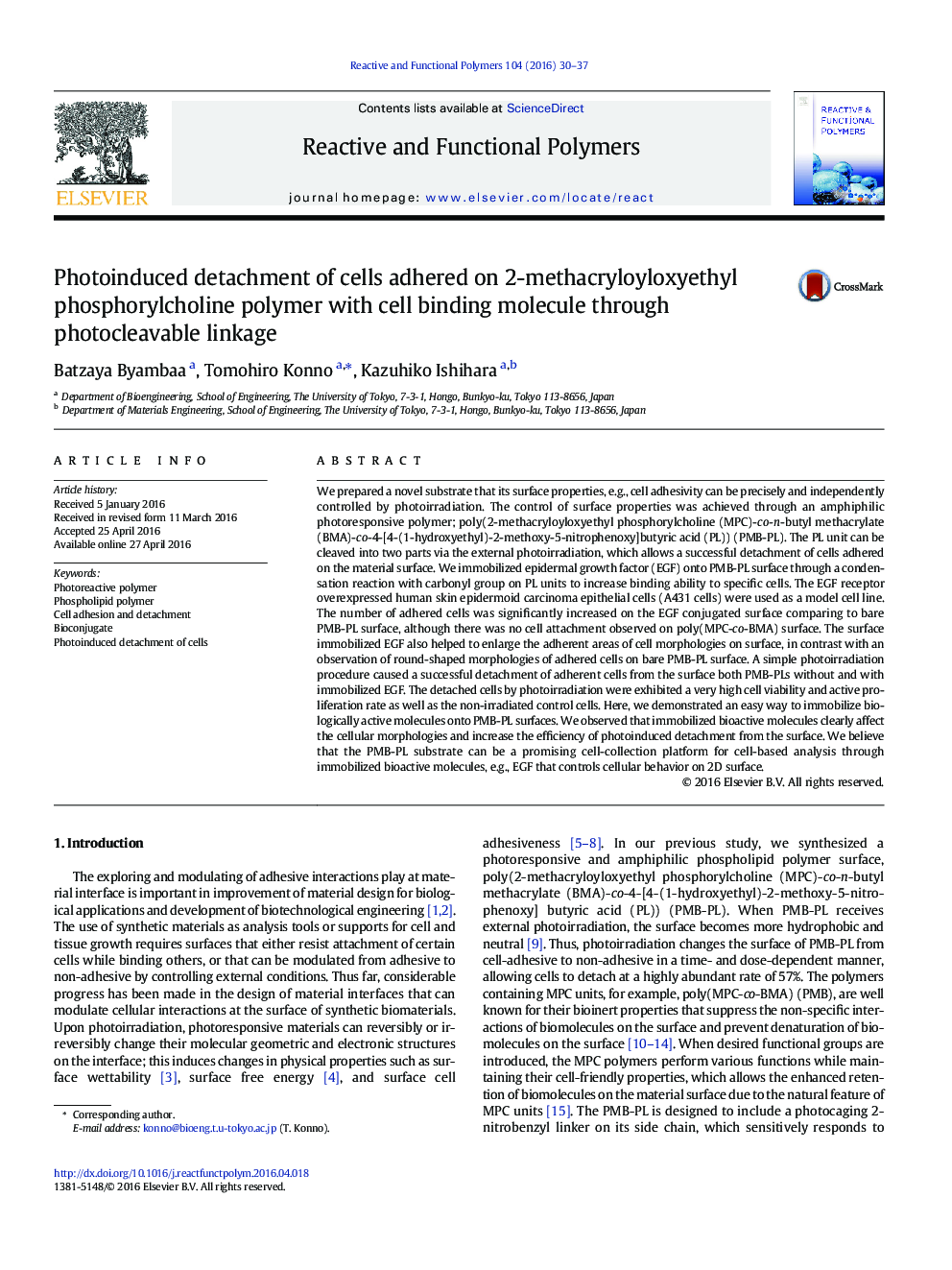| Article ID | Journal | Published Year | Pages | File Type |
|---|---|---|---|---|
| 5209583 | Reactive and Functional Polymers | 2016 | 8 Pages |
Abstract
We prepared a novel substrate that its surface properties, e.g., cell adhesivity can be precisely and independently controlled by photoirradiation. The control of surface properties was achieved through an amphiphilic photoresponsive polymer; poly(2-methacryloyloxyethyl phosphorylcholine (MPC)-co-n-butyl methacrylate (BMA)-co-4-[4-(1-hydroxyethyl)-2-methoxy-5-nitrophenoxy]butyric acid (PL)) (PMB-PL). The PL unit can be cleaved into two parts via the external photoirradiation, which allows a successful detachment of cells adhered on the material surface. We immobilized epidermal growth factor (EGF) onto PMB-PL surface through a condensation reaction with carbonyl group on PL units to increase binding ability to specific cells. The EGF receptor overexpressed human skin epidermoid carcinoma epithelial cells (A431 cells) were used as a model cell line. The number of adhered cells was significantly increased on the EGF conjugated surface comparing to bare PMB-PL surface, although there was no cell attachment observed on poly(MPC-co-BMA) surface. The surface immobilized EGF also helped to enlarge the adherent areas of cell morphologies on surface, in contrast with an observation of round-shaped morphologies of adhered cells on bare PMB-PL surface. A simple photoirradiation procedure caused a successful detachment of adherent cells from the surface both PMB-PLs without and with immobilized EGF. The detached cells by photoirradiation were exhibited a very high cell viability and active proliferation rate as well as the non-irradiated control cells. Here, we demonstrated an easy way to immobilize biologically active molecules onto PMB-PL surfaces. We observed that immobilized bioactive molecules clearly affect the cellular morphologies and increase the efficiency of photoinduced detachment from the surface. We believe that the PMB-PL substrate can be a promising cell-collection platform for cell-based analysis through immobilized bioactive molecules, e.g., EGF that controls cellular behavior on 2D surface.
Related Topics
Physical Sciences and Engineering
Chemistry
Organic Chemistry
Authors
Batzaya Byambaa, Tomohiro Konno, Kazuhiko Ishihara,
